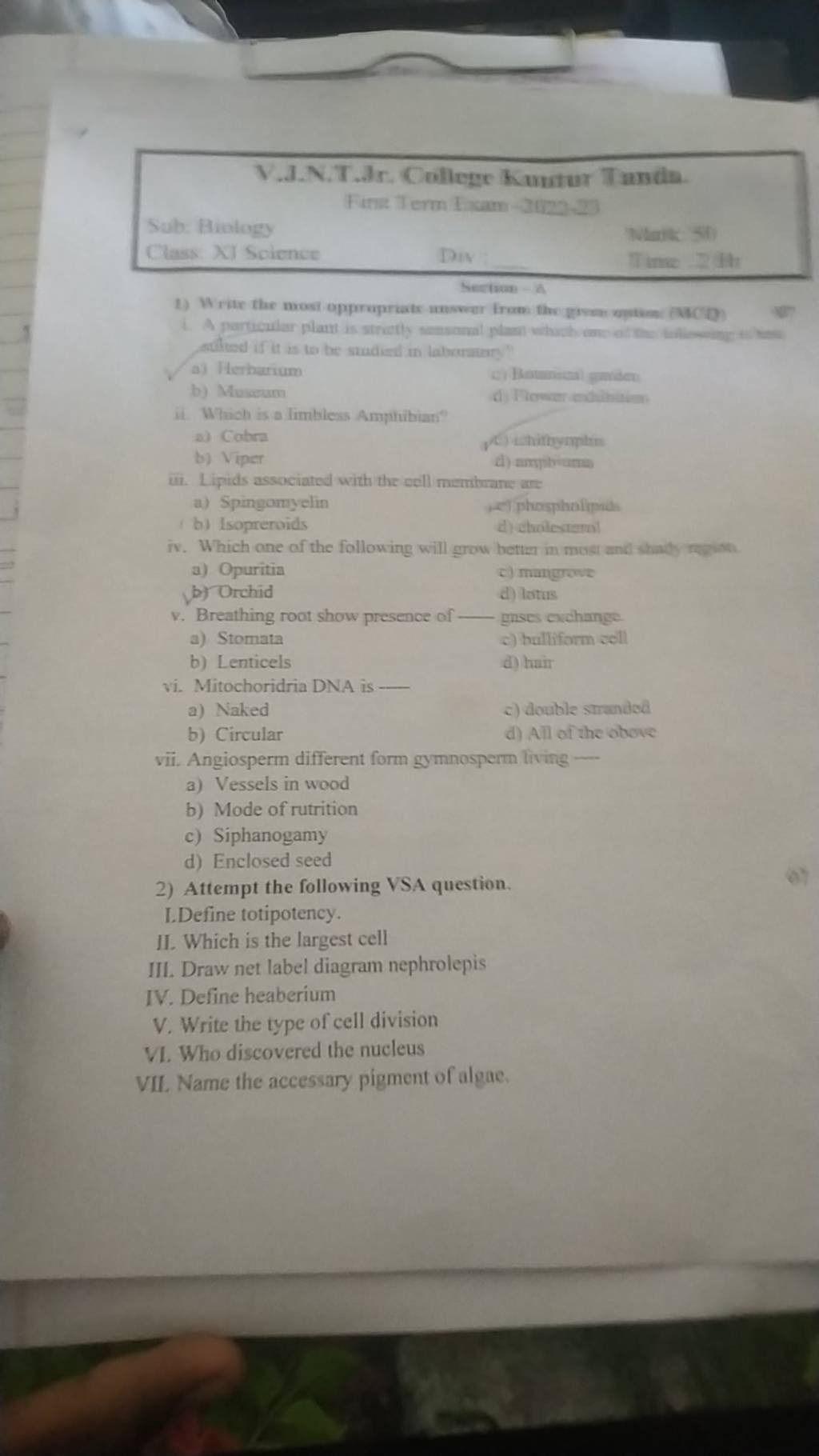Question
Question asked by Filo student

trair a) Naked c) double smandsa b) Circular d) All of the obeve
- Angiosperm different form gymnosperm trving -
Found 3 tutors discussing this question
Discuss this question LIVE
9 mins ago

One destination to cover all your homework and assignment needs
Learn Practice Revision Succeed

Instant 1:1 help, 24x7
60, 000+ Expert tutors

Textbook solutions
Big idea maths, McGraw-Hill Education etc

Essay review
Get expert feedback on your essay

Schedule classes
High dosage tutoring from Dedicated 3 experts
Practice more questions on Diversity in the Living World
View moreStudents who ask this question also asked
Question 2
Views: 5,730


Stuck on the question or explanation?
Connect with our Biology tutors online and get step by step solution of this question.
231 students are taking LIVE classes
| Question Text | trair a) Naked c) double smandsa b) Circular d) All of the obeve |
| Updated On | Oct 8, 2022 |
| Topic | Diversity in the Living World |
| Subject | Biology |
| Class | Class 11 |
| Answer Type | Video solution: 1 |
| Upvotes | 123 |
| Avg. Video Duration | 2 min |



